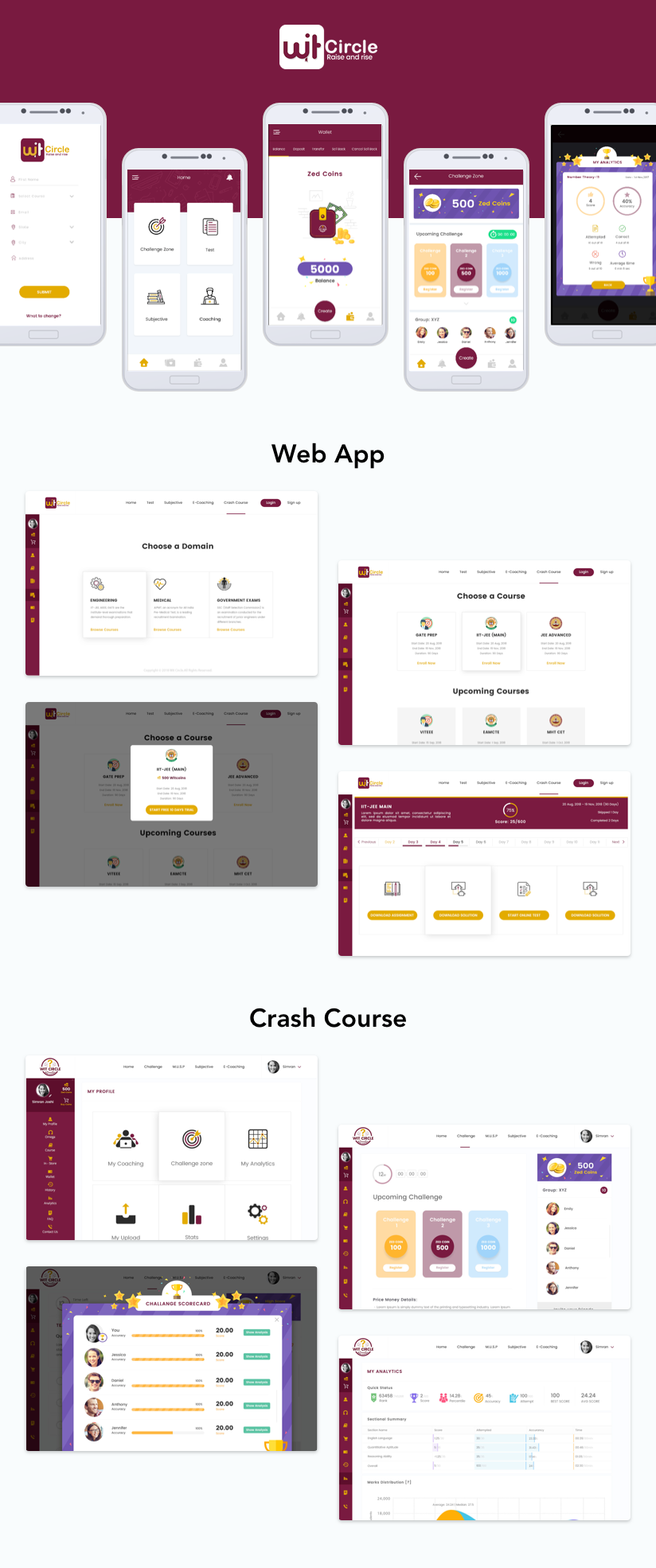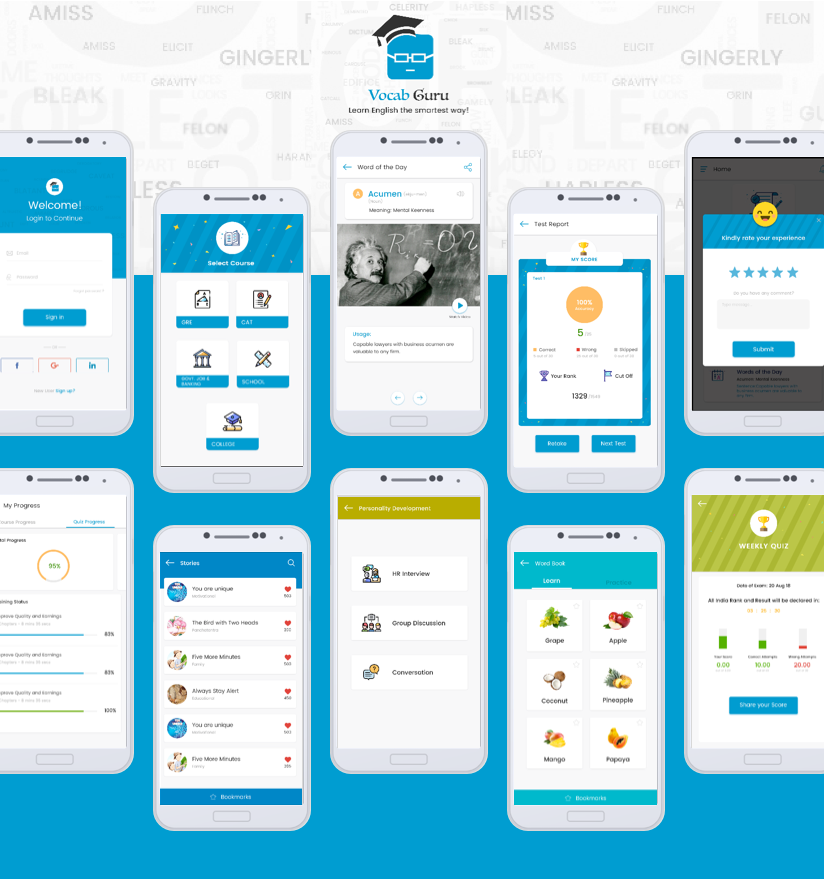This is an A-Z guide for entrepreneurs who wish to develop an LMS like Coursera, FutureLearn, Udacity, edX, etc providing MOOCs. Here, we will be discussing everything, from features to cost of developing such Learning Management Software for mobile or web.
To begin with, what is LMS? The term eLearning was publicly used for the first time in 1999. Perhaps nobody knew how convenient the service would get. Learning Management Software has become pretty common in the last few years. They are much more than just a dimension of eLearning.
MOOC refers to Massive Open Online Courses. These courses first became available by institutes like Stanford, MIT and Harvard. Although, as of today 941 universities from across the world are actively engaging in offering MOOC to their students.

Are big universities actually in favour of LMS?
The Stanford professors founded Coursera, after thorough research about the student preferences. It’s important to note that many leading universities including Stanford, Harvard, Yale, MIT, IITs and firms like Google, Microsoft, etc have MOOCs. They were in fact, one of the first universities to experiment with the concept.
Administration and faculty from over 80 institutes offering MOOC were interviewed for a report released by Brown University and Columbia University. The idea behind this was to determine why institutions are offering MOOCs. About 38% of institutions expected LMS to lead to improvements in educational outcomes. Some believed that the improvement would occur within the MOOC format offered by these LMS.
Universities prefer MOOCs for numerous reasons. Coursera and Udacity offer paid degree-granting MOOCs. Although, the majority of the courses are still free and open to everyone. It not only allows them to extend reach and access but also in building a brand. In addition, it brings innovation and research to teaching and learning.
What are the opportunities for entrepreneurs?
When Coursera first came out in 2012, the founders only had one intention in their mind: bringing the best quality education accessible to as many people as they could. Prior to starting the LMS platform, the two founders Andrew Ng and Daphne Koller were professors at Stanford.
In one of her TED Talks, Daphne mentioned the infamous stampede at a South African University, as a result of the higher education crisis. You can learn more about the vision behind Coursera via this video:
Strongly determined towards one cause, making the best courses from the best universities available to students from around the world- for free!
Even today, incidents like the 2019 college admissions bribery scandal highlight everything that is wrong with our current educational system. In such a scenario, LMS is a promising ray of hope. Not just for the students and financially burdened parents but also entrepreneurs. How?

It’s only fair that the revolution that began with Coursera way back in 2012 became a cause for social entrepreneurship. It has been predicted by MarketsandMarkets that by 2023, the worldwide LMS market value will reach $22.4 billion! It is feasible to make the best out of this opportunity, given the market size.
What Are The Features Of An LMS?
LMS can be developed for various institutes and organisations, ranging from but not limited to schools, colleges, community learning centres and corporate setups. A complete framework of LMS comprises of 5 basic modules: content, learning, learner/teacher interface, knowledge interface and evaluation.
If you’re going for the development of an LMS or MOOC, we recommend shortlisting a web/app development IT firm that has enough experience and domain expertise in the industry. EngineerBabu has worked for numerous clients in the past in the EduTech industry.
Take a look at some of our previous work in the LMS domain:
First, WitCircle. An EduTech app for Indian students to crack entrance exams: IIT-JEE, CAT, CLAT, UPSC, and much more!

Second, Uskill: A platform with online training courses for CyberSecurity and Ethical Hacking.

And third, VocabGuru. An app for helping students build their vocabulary skills.

The Total Cost of Development:
An eLearning mobile app can be inclusive of these above-mentioned features. The modules specified above usually form the basic structure. Your next question would definitely be, “How much will all of that cost?“. Allow us to make it clear for you: the cost and time taken for the development of LMS depend on a number of factors.
Let’s shortlist the components that would affect the final prices. The basic pricing plans of our team include
- Web Design
- Wireframe
- Invison App
- Project Management Tool
- Architecture Document, and
- Database Management
We will look after the Server Setup & Deployment, Notifications Management and make it Future proof. In addition, we hand over a complete product with end to end Testing, Security Compliances, Performance and Code Quality Test. EngineerBabu offers our clients with 3 months of free post-development support as well. Your eLearning mobile app will be having handling capabilities for 1 Million users.
The total investment depends on the scope of your application. Although, for the above-mentioned features’ list, initial investment starts with 9 Lakh + Taxes (for PHP, Codeigniter) and 13 Lakh + Taxes (for Angular, Node). Also, it is recommended to go with PHP given the SEO leverage. But there’s no performance difference between both of these.
Interested? Share your ideas with us and do not worry about leaking your precious ideas. We only work with our clients after having signed NDA. Get a free price quotation from us now!
Simply drop an email at mayank@engineerbabu.com. Cannot wait for an email response? Don’t worry, we’re right here.
Recommended Reading:
- How We Created Lebanon’s 1st Mobile App For Service Providers!
- How to Make a Video-Streaming App like Netflix?
- Setting Up An Offshore Development Center In India?


